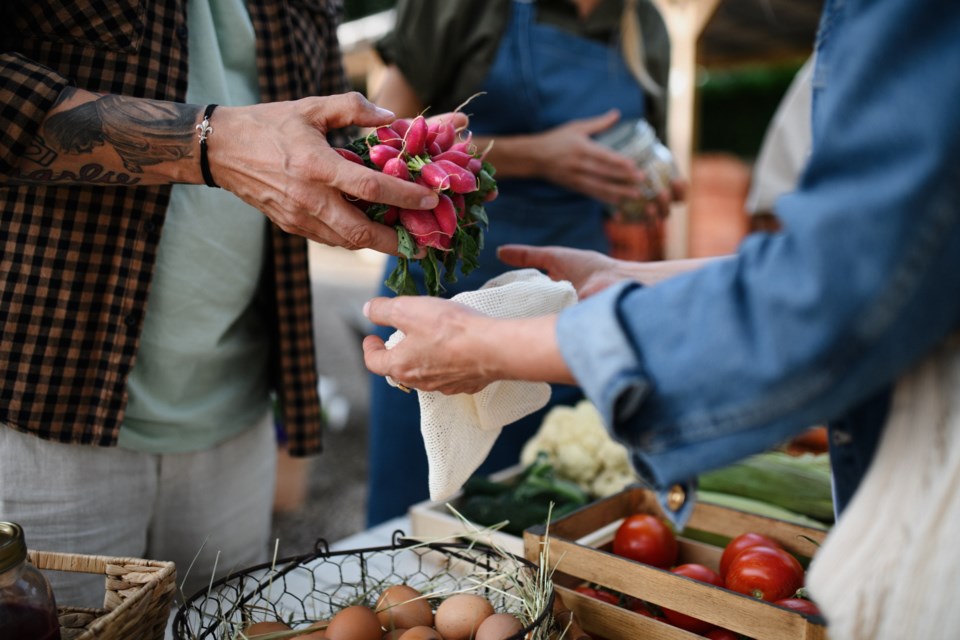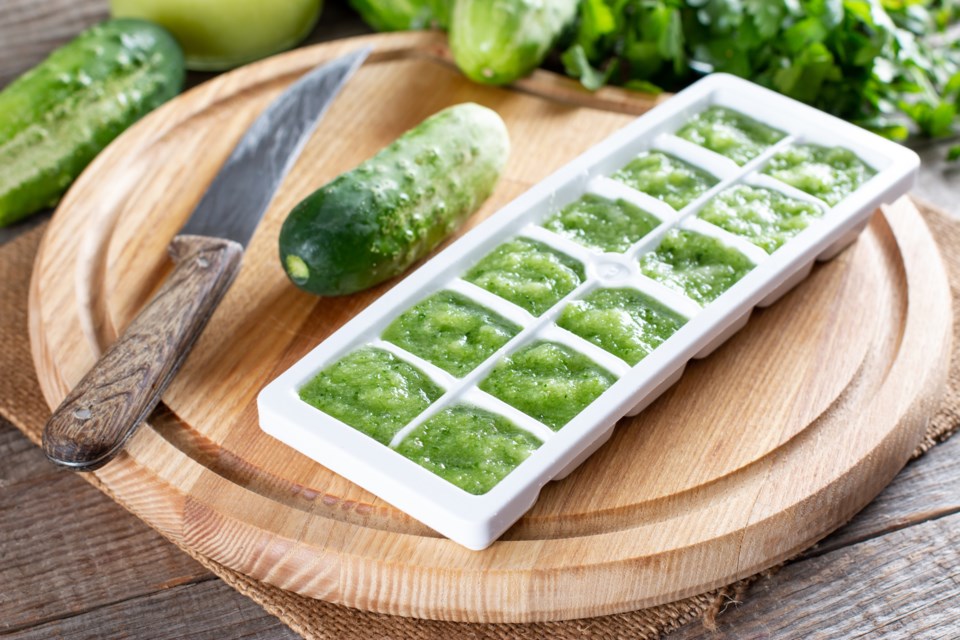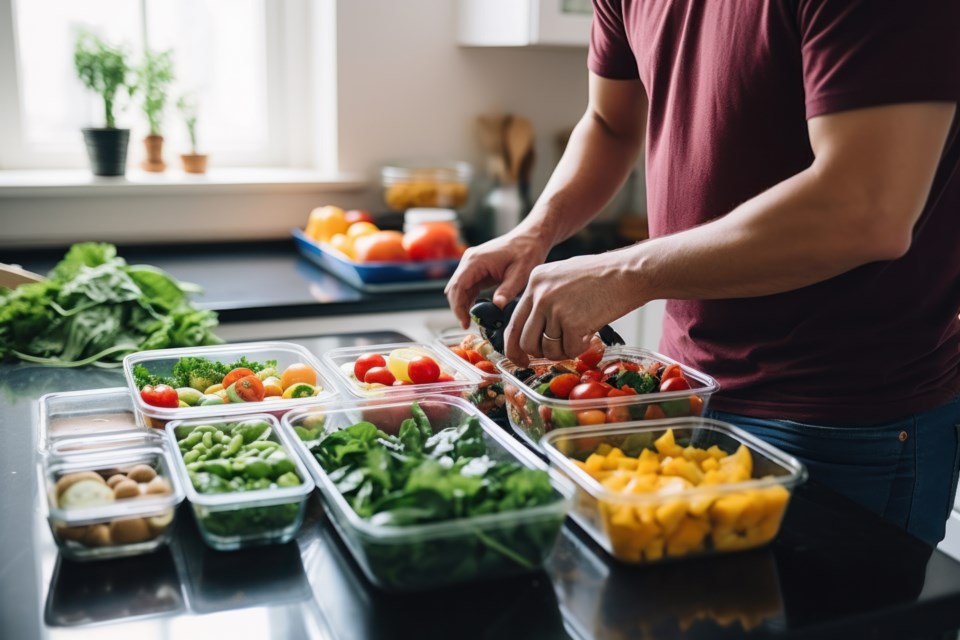It’s a new year, and time to turn over a new leaf.
One resolution we can all get behind is to eat more sustainably—the only question is how. EarthCare Sudbury turned to local expert Bridget King, Public Health Nutritionist for Public Health Sudbury and Districts, and member of the Greater Sudbury Food Policy Council, for some answers and a very helpful blueprint to follow in 2024.
It can help to start by defining what eating sustainably is. “It might mean different things to different people,” says King. “In general, it’s good for the environment, it’s culturally preferred food, it’s affordable and easy to access. It helps to reduce food waste and it’s produced in a way that is equitable to all workers in the food system.”
King’s suggestions:
Choose plant-based proteins more often.
There is definitely an awareness that animal-based proteins have a higher impact on the environment compared to plant-based proteins.
One of the benefits to plant-based proteins is that they are often less expensive than their animal-based counterparts. There are also lots of options available. King recommends lentils, chickpeas, split peas, black beans, tofu, soy beverages, nuts and seeds.

Choose local vegetables and fruit when you can.
There are lots of advantages to this approach. Not only will you learn what grows in season in your area, it allows you to potentially meet the producers, or learn about their farming practices. This helps expand our knowledge of the food system and feeds into more sustainable eating patterns.
It can also help to support the local economy. Both fresh and frozen can be a great way of supporting locally grown vegetables and fruit. You can often buy local produce loosely or with much less packaging.
Just don’t forget your bag!

Reduce food waste
Did you know that if food waste was a country, it would be the third-leading contributor to greenhouse gas emissions, behind the U.S. and China? According to Made in CA, 47 per cent of food waste in Canada is generated at the household level. This is costing us, in more ways than one. On average, Canadians are spending over $1,700 annually on unused food—a huge financial loss. That’s despite the tough times we are experiencing, with grocery store prices 20 per cent higher than they were just two years ago.
“Food waste is also a huge contributor to greenhouse gases, so working to reduce this is another way we can focus on sustainable eating,” King says. In fact, “Every step of the modern food-production process generates greenhouse gases,” according to this excellent article in The Atlantic by Alexandra Frost. “Throwing away food means throwing away all the resources it requires to grow, package and transport it, but the problems don’t end there. As food rots in landfills and open dumps, it emits methane, a greenhouse gas much more potent than carbon dioxide.”
A few tips to avoid food waste include meal planning, buying frozen or canned foods, and learning how to best store fresh produce, especially those items that go bad quickly. For example, fresh herbs are often sold in large bunches and usually we only need just a bit of it. King found that some herbs benefit from being placed in a jar with water and covered with a reusable plastic bag. Another tip could be to hang the herbs to let them dry fully and then grind them up to use as dried herbs.
For any scraps or peelings that you need to dispose of, ensure you place them in a certified compostable bag in your Green Cart to preserve landfill space and reduce methane emissions.

Food swap
The dietitian suggests starting small and with foods that you know you love. If you typically eat animal-based protein foods for dinner every night, try adding a plant-based protein to what you already eat.
Take your typical taco, for example; you can always add some beans to your ground beef or chicken so you’re not really changing what you usually eat. Then you could try to do half-meat, half-beans. You might then be ready to make another shift, where one night a week, you eat a fully plant-based meal.
King loves eating beans and has some helpful tips. “Canned beans can be a great option. They’re easy and there are tons of variety in the grocery store. Just remember to rinse them off before you use them. A great way to save money is to buy dried beans, but there’s more prep time involved with these.”
An easy swap for dairy can be soy beverages. For her morning smoothies, she’ll use local frozen berries (when she’s lucky enough to have some), a soy beverage and soy yogurt instead of dairy.
More how-tos to consider:
- Incorporate more plants into every meal
- Choose to eat a full plant-based meal once or twice a week
- Eat a wider variety of foods
- Make responsible seafood choices
- Eat more of what is grown locally in season
- Dedicate a time slot or day to do some meal prepping
- Learn how to preserve foods to reduce food waste
King reiterates the effectiveness of starting small.
“Try to navigate it in a way that doesn’t cost you more time or money and start with foods you already enjoy. Make it as enjoyable as possible so that it isn’t a chore you have to work on all the time,” she says. “Make it fun and enjoy it with family and friends, and you’ll recognize that small changes over the long-term bring huge successes.”

Helpful Resources:
- Love Food Hate Waste Canada is an amazing resource for how to store your food and recipes for how to integrate food at all stages.
- Sudbury Market is where to find locally grown fruits and veggies in Greater Sudbury.
- Click Fork is an online farmer’s market, a great way to support local producers in northeastern Ontario.
- The Nickel Refillery is a great resource if you want to reduce your packaging, as well as support a local business.
- Canada’s Food Guide - Plant-based protein foods
- Sudbury Community Garden Network
- The Greater Sudbury Food Strategy launched in 2017, with the aim of building a more sustainable, accessible and healthy food system for all.
- Food: Too Good to Waste (greatersudbury.ca) has more tips and resources to help us reduce food waste.
- Flashfood and Too Good to Go are apps you can download where grocery stores are selling their produce that need to be removed from their shelves at reduced prices to reduce food waste.
Learn more about the City of Greater Sudbury and its commitment to helping the community achieve its net-zero goal by 2050.
If you have a project you’d like the City to highlight, contact Jennifer Babin-Fenske at [email protected].
Sources:
